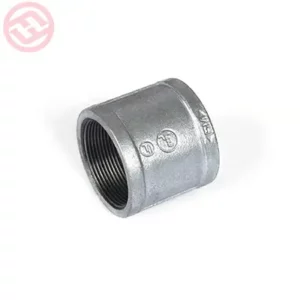Malleable iron pipe fittings and iron pipe fittings are both used in plumbing and piping applications, but there are some important differences between the two.
Malleable iron pipe fittings are made from white cast iron that has been heat-treated to make it more ductile and resilient. This process also makes the iron more resistant to corrosion, which makes malleable iron pipe fittings suitable for use in a variety of environments, including wet and corrosive conditions. Malleable iron pipe fittings are also known for their high strength and durability, which makes them suitable for use in high-pressure and high-temperature applications.
Iron pipe fittings, on the other hand, are made from grey cast iron, which is not as ductile or resilient as malleable iron. Grey cast iron is more brittle than malleable iron, which makes it more prone to cracking and breaking under stress. Malleable Iron Pipe Fittings Iron pipe fittings are typically used in low-pressure applications, such as drainage systems or vent pipes, where strength and durability are not as critical.
In terms of appearance, malleable iron pipe fittings are typically brown or black, whereas iron pipe fittings are often gray in color. Malleable iron pipe fittings also tend to have a smoother surface finish than iron pipe fittings, which can make them easier to install and seal.
Overall, the main differences between malleable iron pipe fittings and iron pipe fittings are their strength, durability, and resistance to corrosion. Malleable iron pipe fittings are generally considered to be superior in these areas, which makes them suitable for use in a wider range of applications. However, iron pipe fittings can still be useful in low-pressure applications where cost is a consideration.
Are there any other factors besides cost that make iron pipe fittings a better choice for low-pressure applications?
There are other factors besides cost that make iron pipe fittings a better choice for low-pressure applications:
Corrosion resistance: While malleable iron pipe fittings are more resistant to corrosion than iron pipe fittings, corrosion is less of a concern in low-pressure applications. Iron pipe fittings can still be used in applications where the environment is not highly corrosive, such as in drainage or vent pipes.
Ease of installation: Iron pipe fittings are generally easier to install than malleable iron pipe fittings. Iron pipe fittings are typically threaded, which allows for easy and secure connections to other pipes or fittings. Malleable iron pipe fittings may require additional tools or techniques to install properly.
Availability: Iron pipe fittings are more widely available than malleable iron pipe fittings, which can make them a more convenient choice for low-pressure applications. Iron pipe fittings can be found at most hardware stores or plumbing supply shops, whereas malleable iron pipe fittings may need to be ordered from specialty suppliers.
Weight: Iron pipe fittings are generally lighter than malleable iron pipe fittings, which can make them easier to handle and install. This may be an important consideration in applications where the fittings need to be installed in hard-to-reach areas or in tight spaces.
In summary, while malleable iron pipe fittings may be a better choice for high-pressure or corrosive environments, iron pipe fittings can still be a suitable choice for low-pressure applications where cost is a consideration. Other factors such as ease of installation, availability, and weight can also make iron pipe fittings a preferable choice in certain situations.
